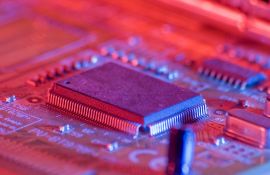Stoke-on-Trent (UK), Ceram, a global expert in materials testing, analysis and consultancy, has published a new white paper outlining the advantages of employing a range of modern surface characterisation techniques to obtain quantitative chemical and physical information on the structure and composition of semiconductor materials.
Surface Characterisation in the Semiconductor Industry illustrates how data gained from these techniques is proving crucial for process engineers, designers and failure analysts to optimise production yields, reduce failure rates and improve semiconductor device design.
 Surface Characterisation in the Semiconductor Industry
Surface Characterisation in the Semiconductor Industry
Dr Alan Brown, Director of Development, at Ceram and author of the paper explains: “Semiconductor device technology is continually being scaled to smaller dimensions which results in greater device density and higher switching speeds. With this advancement there has been a demand for new materials to counteract the effects of these shrinking dimensions. At the same time, developments in solar research and optoelectronics have also produced a new range of compound semiconductor based devices with complex thin layer structures. Techniques that facilitate an analysis of surface composition and an understanding of their functionality are proving to be vital in supporting these technological developments.”
The white paper provides an insight and summary into how a range of analytical protocols using Secondary Ion Mass Spectrometry (SIMS) and other surface analysis techniques are providing professionals in the semiconductor and related industries with solutions to challenges that arise during product development, process improvement, reverse engineering and failure analysis.
Ceram offers expertise and technologies that specialise in surface and interface analysis for semiconductor devices; multi-element depth profiling; elemental and molecular imaging; surface topography; materials selection and characterisation; verification, validation and manufacturing support and performance/failure evaluation.
The white paper is available as a free download at our website.
Source: http://www.ceram.com/